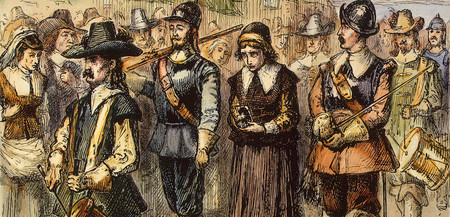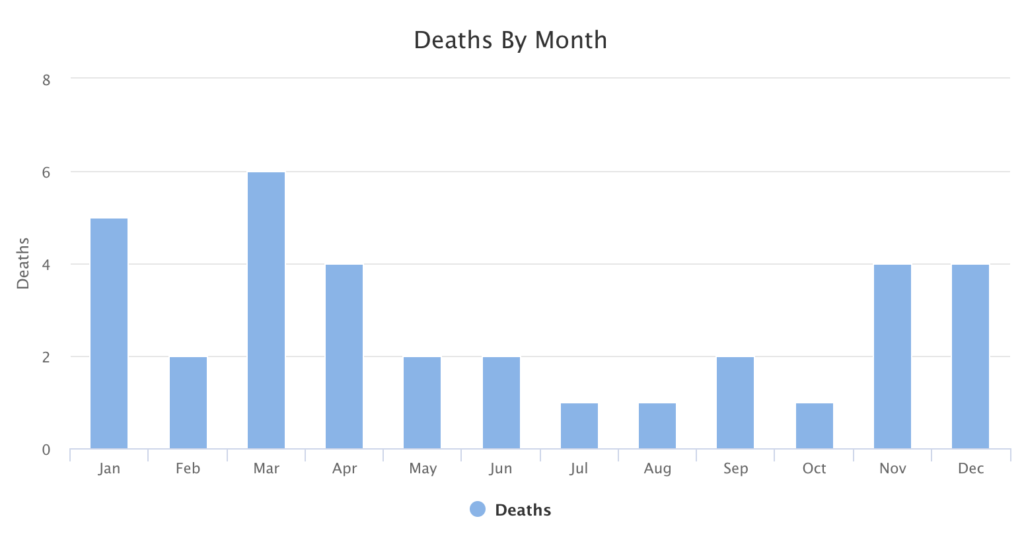
History Through… Gravestones
Gravestone Analysis
Imagine that you are a historian conducting research on everyday life in colonial New England. Unfortunately, the archive, which held most of the written sources from the era, The Gilder Lehrman Institute of American History, has experienced a terrible flood that destroyed your historical materials and forced the archive to shut down for reconstruction.
Now, you are in a bind. The first draft of your book manuscript is due to the publisher in less than two months. How can you conduct a historical investigation without consulting written documents? All of the sudden, you have a great idea—why not analyze New England gravestones?
In this simulation, you will travel across present-day Cape Cod to draw conclusions about colonial life through an analysis of gravestones. As you examine the epitaphs, you will need to take notes on the information displayed. At the end of the activity, you will be asked to make historical assertions about at least two of the following items: life expectance, marital status, children, familial relations, occupations and attitudes about death. Make sure that you consider both the text and the images displayed on the epitaphs.
Sandwich, Massachusetts
After landing in Logan Airport, you embarked on the hour drive to Sandwich, Massachusetts known as the oldest English settlement on Cape Cod. During the mid-seventeenth century, a small group of Europeans branched out from Saugus within the Plymouth Colony to settle the area.

Barnstable, Massachusetts
Barnstable, Massachusetts, originally named after Barnstaple, England, was settled less than a year after Sandwich. Led by Reverend Joseph Hull, farmers settled in the area and expanded their methods of subsistence to include fishing and salt works.

Brewster, Massachusetts
Named in honor of Elder William Brewster, the first religious elder of the Pilgrims, Brewster, Massachusetts was settled by elite sea captains and their families.

Chatham, Massachusetts
Located on the southeastern tip as known as the “elbow of Cape Cod, Chatham was not permanently occupied by the English until 1664. Initially settled by indigenous groups, the area was referred to Manamoyik or Monomot. The town is well-known for the Chatham Lighthouse, established by Thomas Jefferson in the nineteenth-century to provide visibility to the various ships traveling around Cape Cod.

Orleans, Massachusetts
Pilgrims in search of more fertile land, settled in Orleans during the second half of the seventeenth century. Previously part of Eastman, Orleans was incorporate after the American Revolution and named to recognize French support during the American Revolution.

Eastham, Massachusetts
Eastham is believed to be the site of the first interaction between the Mayflower Pilgrims and the Nauset tribe in 1622.

Wellfleet, Massachusetts
Initially explored by the French, Wellfleet is known for its oyster beds and whaling endeavors.

Truro, Massachusetts
Prior to the arrival of European settlers during the seventeenth-century, Truro was inhabited by nearly 7,000 Wampanoag Indians. Although the Wampanoag cultivated maize to supplement their diets, their main sustenance was shellfish.

Provincetown, Massachusetts
The Mayflower Pilgrims first landed in Provincetown, Massachusetts. The MayFlower Compact was signed in the town’s harbor.

Analysis
You have viewed hundreds of gravestones across Cape Cod during your two-months research trip. Since your manuscript deadline is quickly approaching, it is time to sit down and to organize all of the information you have gathered. In the following activites, you will draw a series of conclusions about life in colonial New England based on gravestones. First, let’s view an example.
Example: Time of Death by Month
Below is an example of an analysis that a historian may do. You could examine most common times of death by month.
Based on the chart below, one concludes that deaths were most common during the months of November, December, and January. Through further investigation of other sources, you could conclude this is because of harsh winter conditions.
But, there are several deaths in March and April as well. This would be something to investigate further using other historical sources. Could this occur because of drastic temperature shifts between seasons or a particular illness that is common during these months?
In a quiz to follow, you, as the historian, will collect and organize some data based on information from the gravestones.
| January | 5 |
| Febuary | 2 |
| March | 6 |
| April | 4 |
| May | 2 |
| June | 2 |
| July | 1 |
| August | 1 |
| September | 2 |
| October | 1 |
| November | 4 |
| December | 4 |


Podcast
Puritan Views on Death
Listen to the podcast below about Puritan views on death and review the images of the Cape Cod gravestones in the previous section.